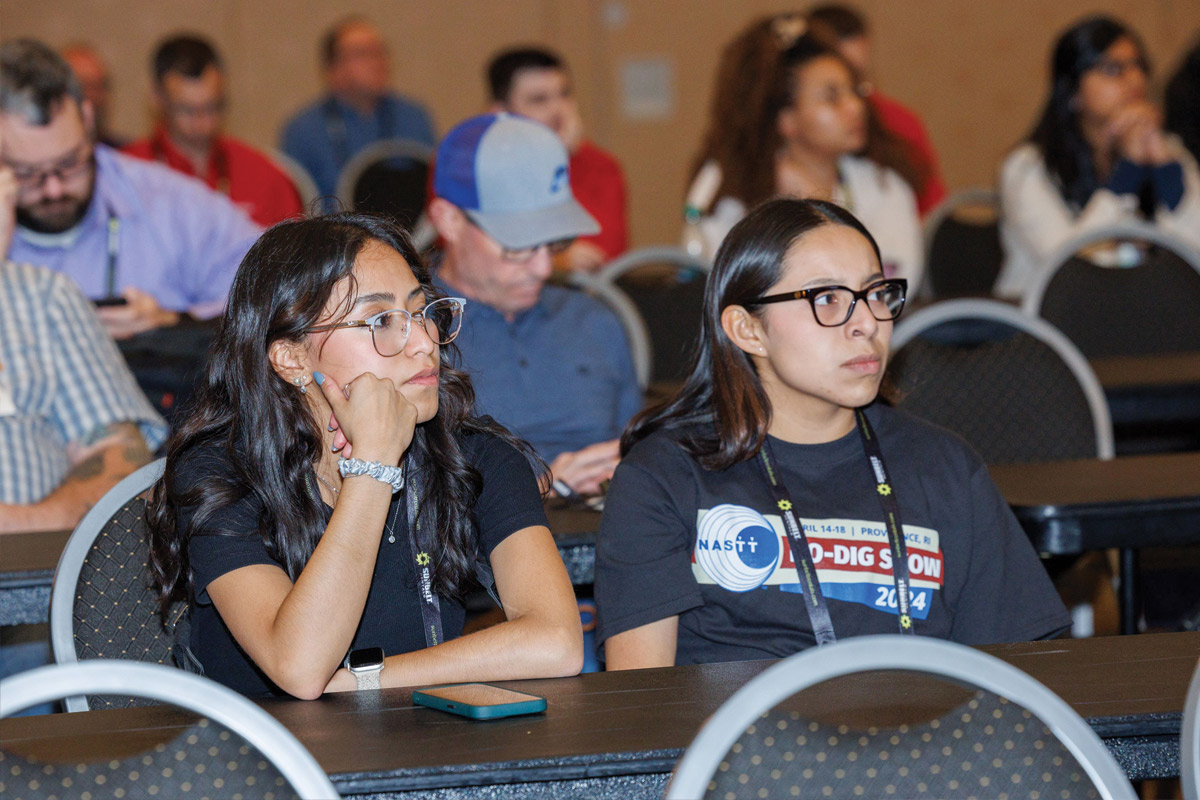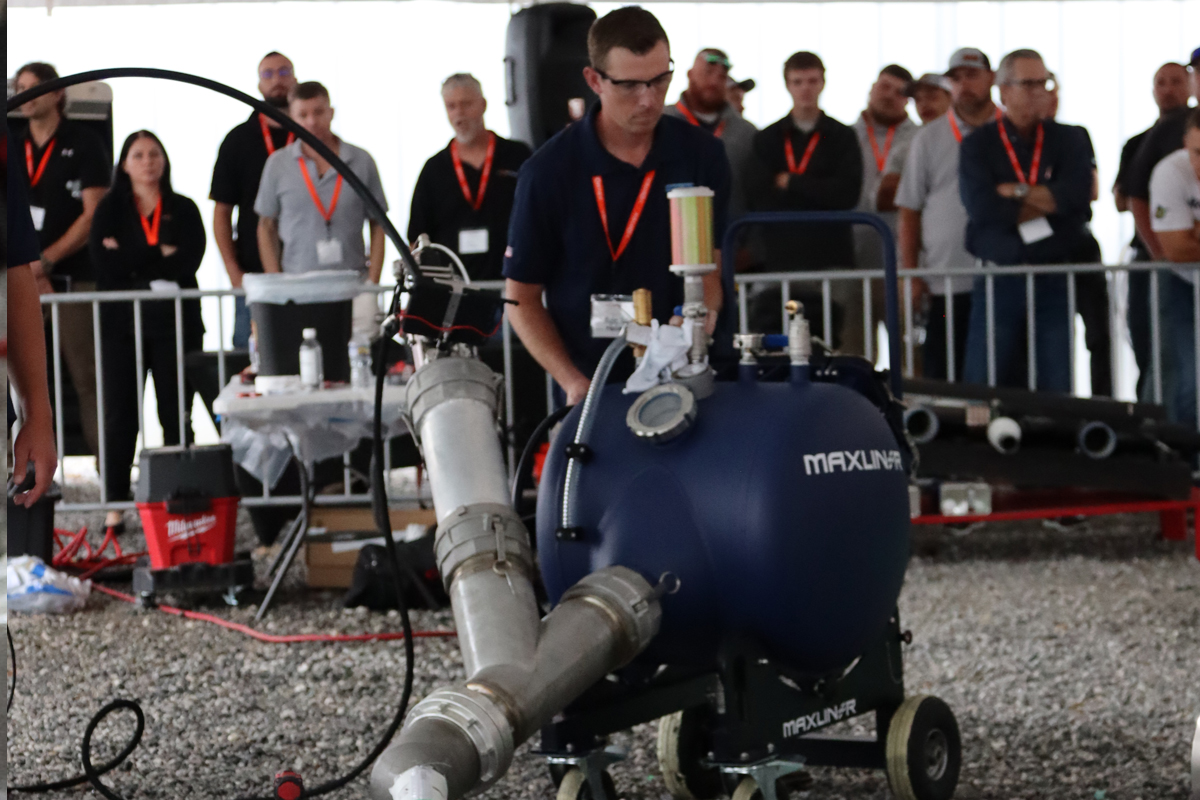
Trenchless Pipe Repairs, of Seattle, Proves Reputation is Built with Results you Can Show
March 1, 2016

Trenchless Pipe Repairs captures video and enters defect codes into the ROVVER X’s handheld touch screen controller. Once the lines are televised and the crew’s observations are entered, a finished report can be generated.
A key ally in Lincoln City, Oregon’s fight against inflow and infiltration is a company named Trenchless Pipe Repairs.
Lincoln City sits above the pounding surf of the Oregon shoreline, with the mountains of the Coast Range looming dramatically behind it. For years, it’s been a destination for inland vacationers, drawn by more than seven miles of beaches, outlet shopping, and a resort casino. Summertime visits see the local population swell from about 8,400 to more than 30,000.
Answering the sewage treatment needs of a population, this variable is a challenge, particularly when the local economy depends on pristine beaches. Lincoln City’s wastewater department serves more than 5,100 customers with a collection system comprised of 74.4 miles of gravity mains, 11.25 miles of force mains and 28 lift stations — all feeding a treatment plant rated for 3.0 mgd. Given the City’s uneven topography, this is no small feat — some effluent goes through five lift stations before reaching the treatment plant.
The sewer infrastructure itself dates back to the 1960s, with significant sections added during residential expansion in the 1980s. As that infrastructure ages and deteriorates, groundwater inflow and infiltration (I/I) occasionally overwhelms the system’s carrying capacity, and chronically dilutes the capacity of the treatment plant. Just last December, heavy storms caused a sanitary sewer overflow (SSO) of approximately 550,000 gals. To fight I/I, the City tackles lateral and point repairs on a rolling basis — one that allows continuous improvements without the red tape of extensive budgeting and bidding.
Seattle-based Trenchless Pipe Repairs (TPR) is a rehab contractor focusing on the residential, commercial and small mainline market segments. TPR was founded 2011 by Nick Patrick, who had a decade’s previous experience in sewer rehab as CIPP manager for Applied Professional Services, president at Insta-Pipe Inc. and CIPP trainer for Northwest Trenchless Services. The company has carved a niche in the Pacific Northwest performing residential and commercial lateral rehabilitation, as well as sectional relining, lateral connection relining and pipe inspection for municipalities.
RELATED: Perma-Liner Opens Midwest Distribution facility in Chicago
Depending on the needs of a job, TPR employs Perma-liner Industries solutions for sectional lining, lateral lining and full-length CIPP, and Interfit USA connection liners for lateral connections.
On a cold January day, a TPR crew finds themselves a block from the beach, setting up to perform a series of mainline CIPP repairs in a quiet residential community: one Interfit liner and two sectional liners. The sewer lines had just been jetted by the City.
 “The first part of any rehab job is reconnaissance,” says TPR crew supervisor and CIPP lead James Tryon. “That means inspecting the pipe to document the defects, and then properly calibrating our repair.”
“The first part of any rehab job is reconnaissance,” says TPR crew supervisor and CIPP lead James Tryon. “That means inspecting the pipe to document the defects, and then properly calibrating our repair.”Mike Wasmund, the crew’s inspection specialist, rapidly deploys an Envirosight ROVVER X inspection crawler at the upstream manhole and heads to the location highlighted on a copy of the town’s plans.
RELATED: Innovations Drive Industry Growth – Rehab
“Pre- and post-inspection is essential,” says Tryon. “It’s how we prove the value of our work to our customers, and it’s essential to our own internal quality control processes.”
As Wasmund captures video and enters defect codes into the ROVVER X’s handheld touch screen controller, Tryon explains, “Once we televise the line and enter our observations, generating a finished report is practically automatic. That report is given to the customer, but we also reference it for decisions that are essential to our work: the size of the patch, exactly where to place it, the angle of the lateral connection, whether flow requires bypass-pumping, any dimensional anomalies, and how to adjust cure time to compensate for the cooling effect of inflow.”
For large mainline CIPP outfits, it’s easy to keep an inspection truck busy among several active relining crews in a single area. For this crew, staying productive and profitable means having full inspection capability without a lot of overhead. ROVVER X solves that challenge. The crawler system’s compact, three-component design stows neatly in a corner of Tryon’s pickup bed, and runs off a handheld, 2,000-watt Honda generator.
“We’re an agile crew, so we didn’t want a system that requires a dedicated truck,” says Tryon. “But we also didn’t want to compromise on functionality. Our ROVVER X gives us inspection capability in lines up 48 in. and at distances up to 1,000 ft, yet we’ve been able to deploy it on a small ATV for easement work when we need to.”
RELATED:Envirosight Equipment Shows State Pen Escape Tunnel
TPR purchased the ROVVER X two years ago. Before that, the company subcontracted inspection work. “Subcontracting helped us stay lean in the beginning, but it often tied our hands,” Patrick recalls. “It’s hard to be responsive when you have to schedule inspections, and at our tier of the market, many jobs require us to turn on a dime.”
TPR’s crewmembers wear several different hats as they work to complete the repairs. Likewise, they depend on their crawler to perform more than just inspections. “Sometimes we push in packers, other times we winch them into place,” says Wasmund. “When winching, ROVVER X is our go-to tool for threading lines.”
Wasmund pilots the ROVVER X to the downstream hole, attaches the threading line and reverse crawls to the upstream manhole, where the crawler is extracted and the winch line is then dragged back through the pipe by the threading line. “Nobody likes to crawl backward, but this crawler makes it painless,” he says. “The reel automatically manages cable tension at all times, so there’s no slack for us to drive over. And for extra security, the crawler’s built-in rear-facing camera gives us visual assurance we aren’t going to get tangled up in cables or obstacles. That camera has saved my neck several times.”
With the packer winched into place and inflated, the crew wastes no time as the Interfit liner cures. They prepare a 4-ft sectional liner to be installed at the interface between the open manhole and an 8-in. upstream line. “In our business, we seldom do the same thing twice in a row,” says Tryon. “[Patrick] likes challenging applications.”
He rattles off specialty jobs: ballast ducts on an ocean vessel, concrete-encased steel air ducts, lateral relining performed via a cleanout. “Needless to say, we have to be versatile,” he continues, “and the crawler helps with that. We can quickly modify it to inspect pipe from six inches all the way up to 48. Once we had a job in 5-in., so Envirosight sent us the ROVVER X 95 crawler — it just connected to our existing cable reel, and allowed is to do a complete pan/tilt inspection.”
With the Interfit liner completely cured, the crew deflates and extracts the packer. The moment of truth comes when Wasmund returns with the crawler to find a flush, perfectly aligned, fully cured lateral connection. He documents the result with the same attention to detail, then extracts the crawler from the line. “Over the years, visual feedback from this crawler has really helped us master our craft,” says Patrick. “And the reports it generates have quickly helped us build a solid reputation in our market.”
Amidst the din of crashing ocean waves in Lincoln City, it’s hard not to appreciate the persistence of water. That same persistence makes inflow and infiltration an ongoing struggle for municipalities like Lincoln City, whose only option is to answer the ravages of time and the elements with vigilant maintenance. Lincoln City trusts Trenchless Pipe Repair for rehab work, and that trust is built on inspection reports that demonstrate the quality and necessity of the crew’s work. And for Trenchless Pipe Repairs, that trust is the most gratifying aspect of sewer rehab — even when it’s no day at the beach.
Jake Wells is director of marketing at Envirosight LLC.




